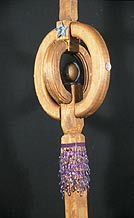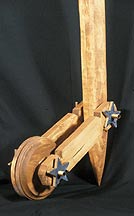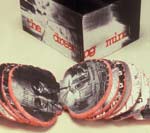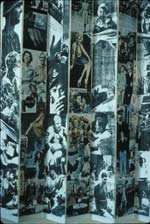Mary Stewart



Description
Experience in designing and constructing expressive three-dimensional forms using a variety of materials and methods. This is a studio course, including critiques, demonstrations, presentations and hands-on work.
Objectives
Upon course completion, all students should be able to:
- Define and effectively manipulate the elements and principles of 3D design to create non-objective, abstract, and representational compositions;
- Use a wide variety of idea generation strategies confidently;
- Create projects that are structurally sound, using wire, board, wood, and clay;
- Use a band saw, drill press, sanders, and basic hand tools effectively;
- Speak and write critically about personal and peer artworks and propose alternatives.
Required Textbook
Launching the Imagination: A Comprehensive Guide to Basic Design, OR for transfer students, Launching the Imagination: 3D
Additional Readings: See Foundations Reserve List
Assessment
Grades are based on three major factors.
- Skill acquisition and application. Has each element and principle of design been used fully? How fully and effectively do your projects engage the third dimension? (40%)
- Idea Development. How effectively have you used maquettes and other idea generation strategies? How wide a range of possibilities did you explore? (35%)
- Learning Process. Do you come to class prepared and receptive? Do you take risks? How substantial and consistent are your contributions to class discussions? (25%)
Attendance
Attendance is required. It is impossible to fully “make up” a missed demonstration or critique. Arriving late also derails learning. Students that miss more than 8 hours of class for any reason generally earn a C or below. More than two unexcused absences will result in a C or below. More than 3 unexcused absences will result in a D or below.
Note: One project will be accepted one day late without penalty. One additional late project will be accepted with a one letter-grade penalty for each day it is late.
Basic Supplies
9”x12" sketchbook
90 degree angle
mat knife
X-acto knife
16”X20" self-healing cutting surface
masking tape
scissors
pencils
paint brushes, as needed
Elmer’s glue
long nose pliers
ruler
Personal planner or calendar
sandpaper
scotch tape
Projected Assignments
Week 1 and 2: From 2D to 3D
Head Case, introducing tunnel book and slotted structures. Reading: C9, LTI
Written Assignment: Biographical statement
Week 3: Dominant and Subordinate.
Expanded 3D composition and construction, using one line, one to six planes, and one simple volume. After producing a series of drawn and constructed sketches, we will complete a single refined study demonstrating compositional dominance. Reading: C10, LTI
Weeks 4 & 5: Balance and Proportion.
Exploration of variations in orientation and deliberate use of the base. Reading: C10, LTI
Weeks 6, 7, and 8: Narrative Mask or Becoming Borg
Transformations using wire and plaster gauze. Reading: C12,LTI
Weeks 9, 10, 11: Transformation Reading: C5, 6, & 7
Learning basic woodshop skills and researching non-Western art and design
Weeks 12, 13, 14, and 15: Collaborative Capstone Project
Such as:Audio Assemblage, Thirty Second Marble, or Superhero Mask, etc. Reading: C12
Biographical Statement
Due next class meeting
Write a two to three page paper introducing your background. Write freely about your life, education, or art. Consider: How long and for what reason have you made art? What were your major interests in high school? What are the sources of your ideas? Under what conditions do you learn the most? What gives you most confidence/motivation?
Research Topics
Due during week 4
Write a two to three page paper researching a contemporary three-dimensional artist or designer. This could include background information, exhibition history, thematic focus, and cultural relevance. Choose an artist or designer you admire but don’t already know well. Try to find a unique person who is pushing the limits and visual understanding of what three dimensional design can be.
Mary Stewart email address: marystewart3@gmail.com

